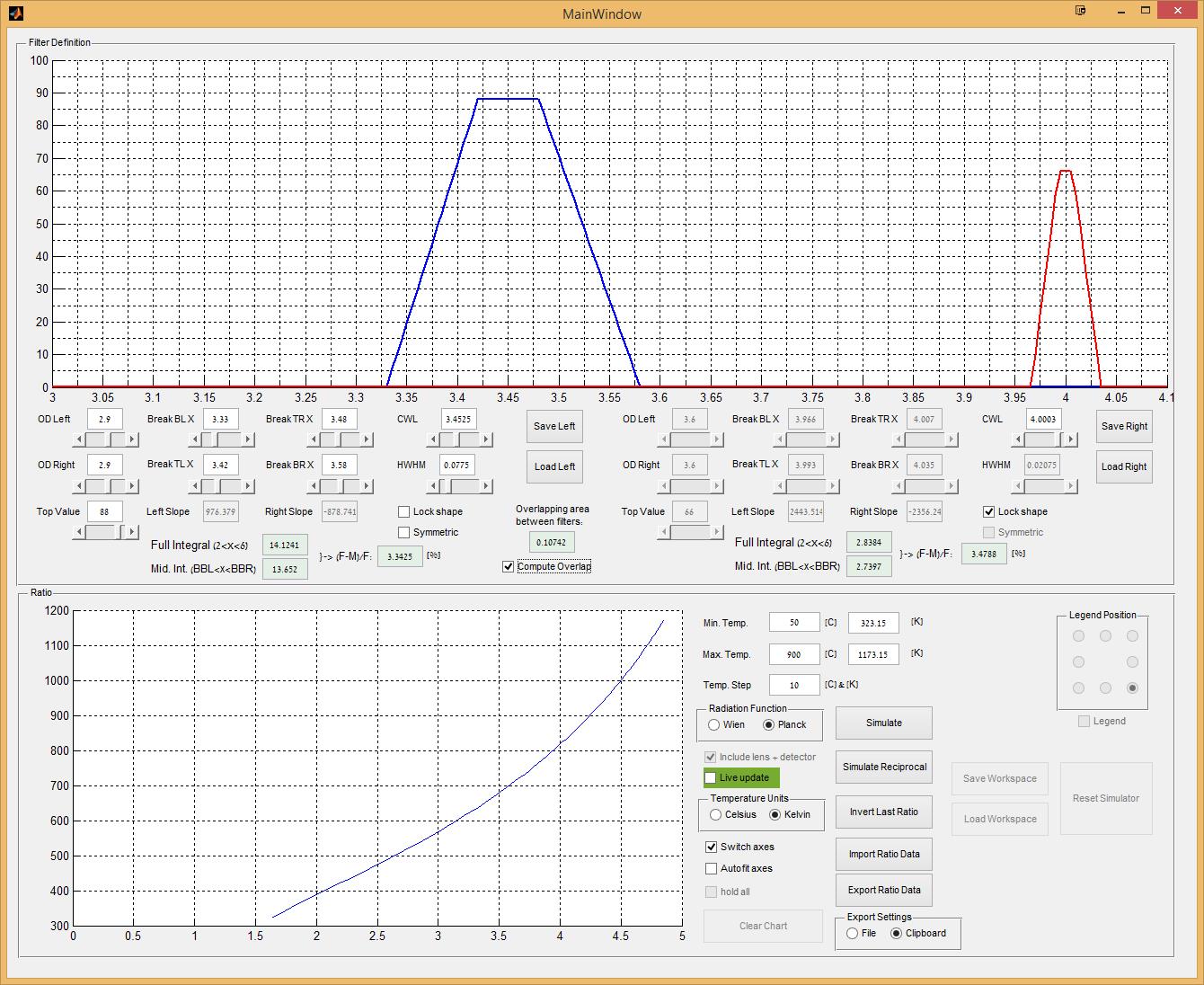Multidisciplinary measurement technique development is a crucial aspect of our ambitions. One of the applications of which include non-intrusive simultaneous gas temperature, pressure and velocity measurements. This could yield to high fidelity experiments in small engine environments (UAV combustor/turbine, ramjet passage, transonic/supersonic flow applications), where probe blockage is significant. Eventually, through sensor development, the applications could extend beyond the laboratory environment.
Optimized Multispectral Radiation Thermography
Multispectral radiation thermometry (MRT) is a general name for optical measurement and data processing techniques for obtaining solid surface temperature distributions independent of object emissivity. Thermography based on MRT methods allows acquisition of 2D surface temperature distributions without any prior knowledge about the target object. MRT involves taking measurements at different wavelength bands (“colors”) to obtain independent datasets. The “selection” of the desired radiation bands is achieved through optical filtering – either built directly into the optical detector, or introduced elsewhere along the line of sight.
As it turns out, choosing the right filter combination has a significant impact on the usefulness of MRT. Several tradeoffs related to filter selection were observed in preliminary analysis that affect an MRT system’s robustness, sensitivity, temperature-range of operation and the validity of assumptions regarding emissivity. To resolve these tradeoffs in an optimal manner, an in-house graphical filter design tool is being developed as part of the research. The tools allow the user to define filters of various trapezoidal shapes and investigate the resulting ratio-to-temperature curve. The tool also provides various statistics, such as the filters’ overlap area or the relative integral contribution of their tails.

Independently configurable parameters in the tool for each filter:
- Shape-related: Optical density (left+right), top transmittance, start/end of rising/falling segments, center wavelength, width.
- Simulation-related: minimal & maximal temperatures to simulate, temperature step, radiation function (Wien\Planck).
Auxiliary computed values: Integral of the filter including the tails (2-6 micron wavelength range), integral of the main lobe alone (tails excluded), percentage of the filter integral in the tails, overlapping area between the filters.
Additional features: filter shape import & export, ratio curve export, live update (of the ratio upon changing filter shape parameters).

